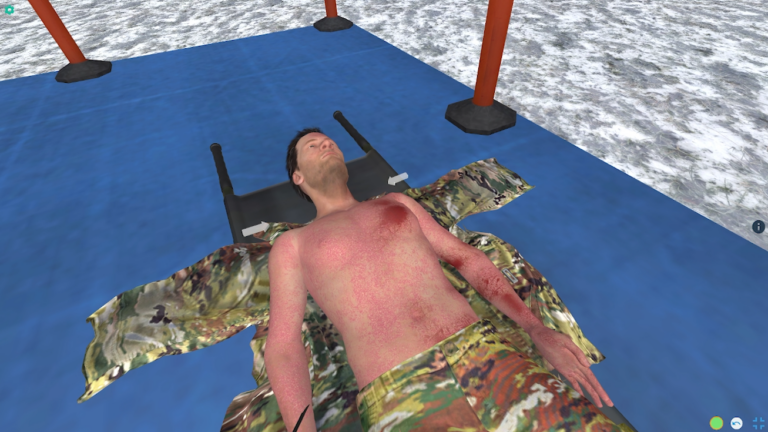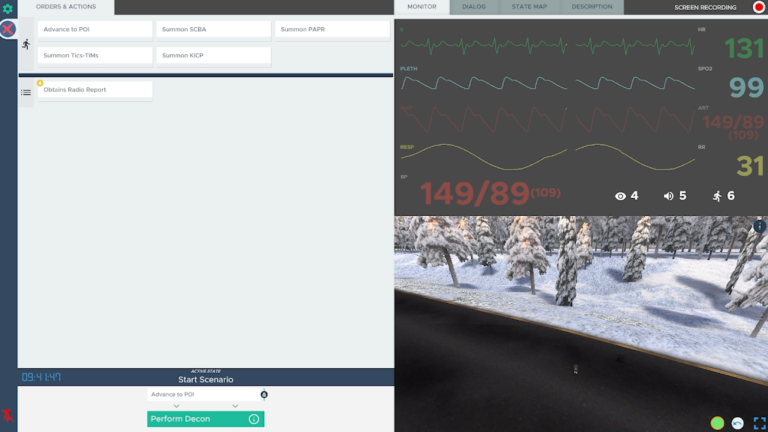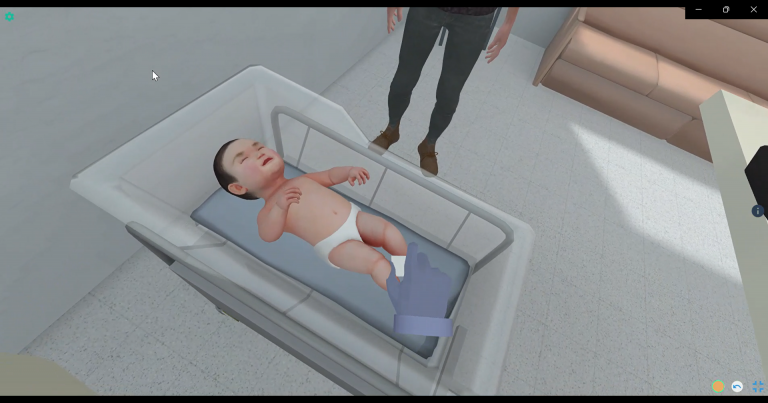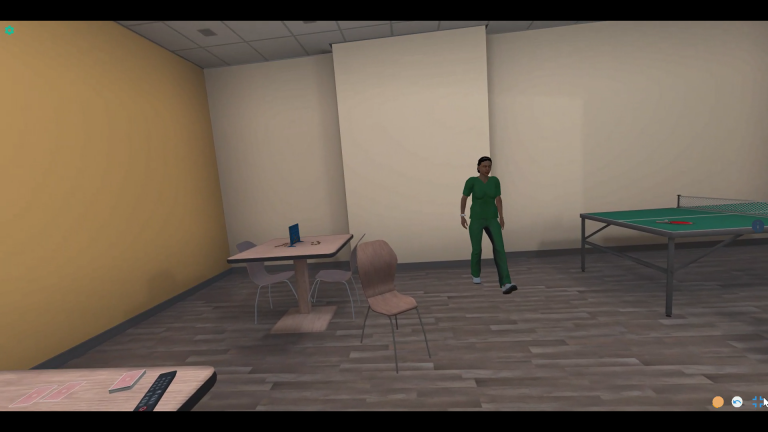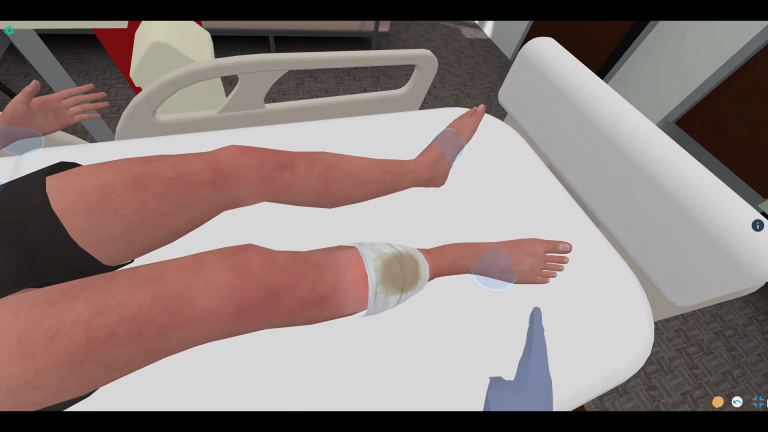Set in the woodland environment, the Learner responds to the scene after an accident with a burning military vehicle. The wind shifted and the patient had significant toxic fume inhalation for a period of time. They develop symptoms of cyanide toxicity. The patient suffers minor traumatic injuries. The patient requires immediate antidote for cyanide toxicity, as well as decontamination.
Learning Objectives
– Recognizes potential hazardous material exposure and calls for appropriate supplies for decontamination
– Appropriately mitigates exposure risk to minimize exposure and contamination:
a. Dons appropriate PPE, including an appropriate mask, and gloves
b. Identifies environmental threats including vapor hazard, liquid, confined space and low oxygen environments
c. Moves the casualty away from the threat or agent, using the principles of fresh air, upwind, uphill, upstream, time, distance and shielding
– Assesses casualty to determine agent of concern, conducting triage and recognizing symptoms:
a. C – Consciousness
b. R – Respirations. Are they present, labored, or absent
c. E – Eyes, pupil size
d. S – Secretions. Are they increased or absent
e. S – Skin. Is there diaphoresis, cyanosis, is it dry and hot
– Evaluates the casualty at the point of injury for life threats and performs immediate interventions if indicated
– Performs a secondary assessment and efficient decontamination at the Dirty CCP
a. Evaluates circulation
b. Prevents hypothermia and evaluates for potential head injury
c. Prepares for extraction
– Performs a visual contamination and detector check before crossing the cold line
MINIMUM:
OS: Windows 10
Processor: Intel Core i5-2300 | AMD FX-4350
Memory: 4 GB RAM
Graphics: Nvidia GeForce GTX 2060
DirectX: Version 11
Storage: 12 GB available space
RECOMMENDED:
OS: Windows 10
Processor: Intel Core i7-2300 | AMD FX-4350
Memory: 8 GB RAM
Graphics: Nvidia GeForce GTX 3060
DirectX: Version 11
Storage: 12 GB available space
Interested in this scenario?
Sign up to talk with a member of the SimX team today!

